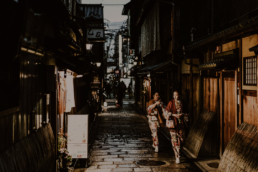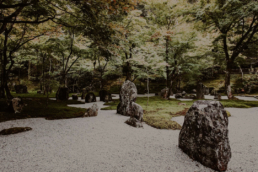Where to go when the borders reopen
Traveling to Japan: where to go when everything is over
Author: Erika | Source: The Japan Times
Due to the COVID-19 pandemic, at the moment it is impossible to travel to Japan, however, nothing prevents us from dreaming but above all planning our next trip! Let's start by telling you about some particular places that you should absolutely include in your "travel to do list".
Tohoku: Michinoku coastal trail
If you love long walks and hiking, this is the place for you. In fact, along the coast of Michinoku, you can find a path for all those who like to venture into nature. It is a hiking trail that runs 1,025 kilometers along the Pacific Ocean from South Aomori Prefecture to Fukushima Prefecture.
The trail follows the old Sanriku Hamakaido, an ancient trade route that cut through the depths of the forest and glades. This will not only allow you to see an unusual side of Japan but also to spend some beautiful moments surrounded by nature.
Ishikawa Prefecture: Kiriko Festival in Noto
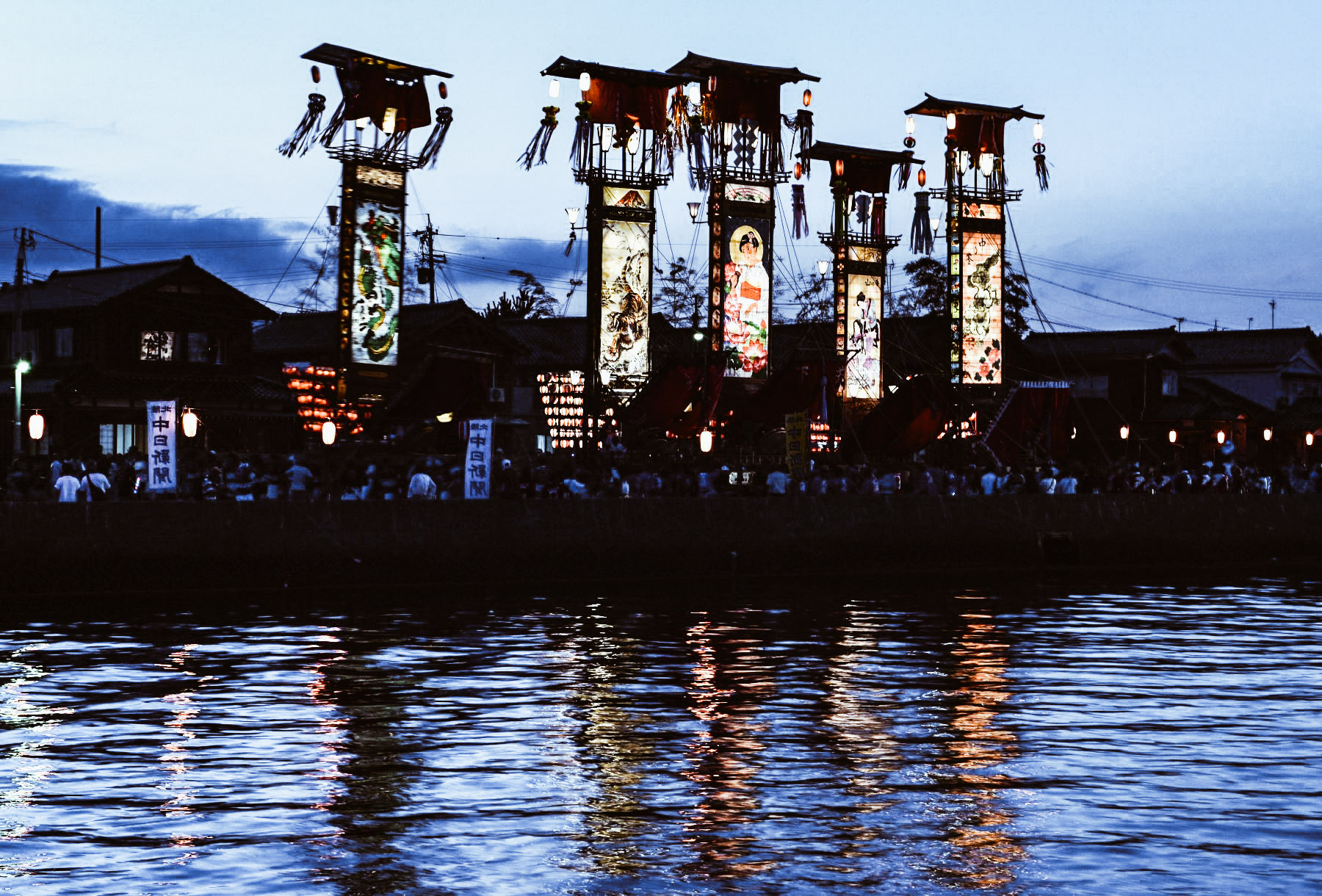
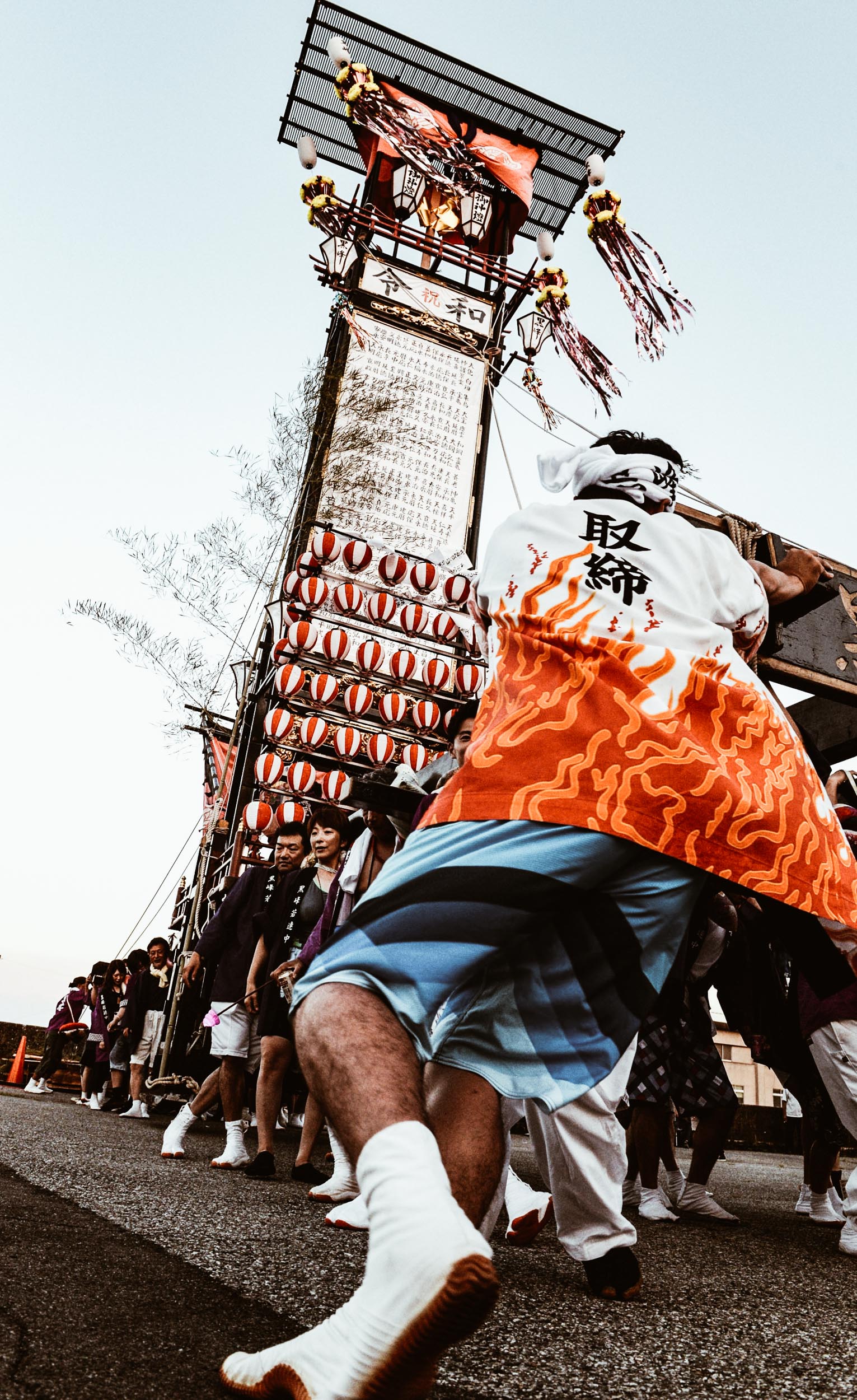

photo credits: japan-forward.com
There are many festivals in Japan, some more traditional, others more eccentric and exuberant. However, the Kiriko festival of Noto (floating lanterns) in Ishikawa Prefecture is one of the most impressive. In fact, if you have ever had the fortune to attend, you will surely have felt teleported back to the Showa era (1926/89). Tradition has it that every year, everyone who belongs to the prefecture returns to Ishikawa to bring the great kiriko of their neighborhood.
Every year, men with matching happi of various colors, carry 15-meter kiriko weighing 2 tons through the streets of the city accompanied by the sound of flutes and drums.
However, the Ishikawa Peninsula also offers many other attractions, such as Kanazawa Castle, one of the many beauties of the rising sun. So if you're planning to travel to Japan, this is definitely one of the must-see destinations.
Tokyo: The back streets of the Kita district

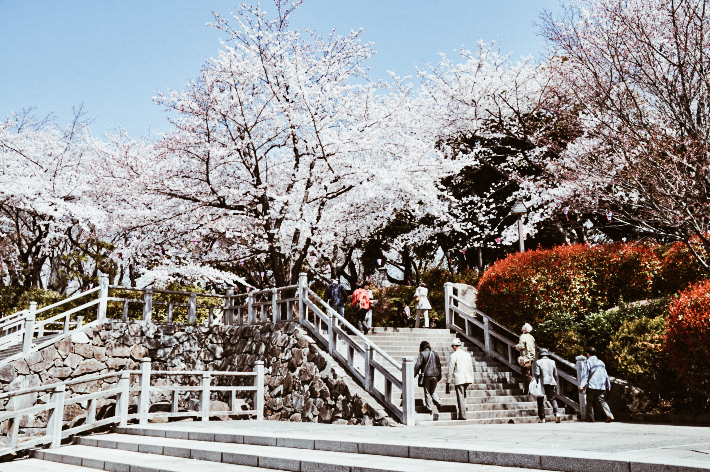
photo credits: tokyo2020.jp
If you've ever been to Tokyo, you may have noticed that the city not only has its most known neighborhoods but is made up of many small side streets that hide endless secrets and delights. It's very difficult to choose what to see first, but the Kita district is one of the most particular and less known.
In these small streets in fact you can find small family-run shops that date back to even before the first World War. Surrounded by the shops of Wagashiya (traditional sweets), here you can taste the best and most particular dango and sweets in the city.
Don't forget the beautiful Japanese gardens, with colossal lanterns and typical Japanese maples, waterfalls, and rocks that make this place a sublime masterpiece.
Fukuoka Prefecture: the yatai
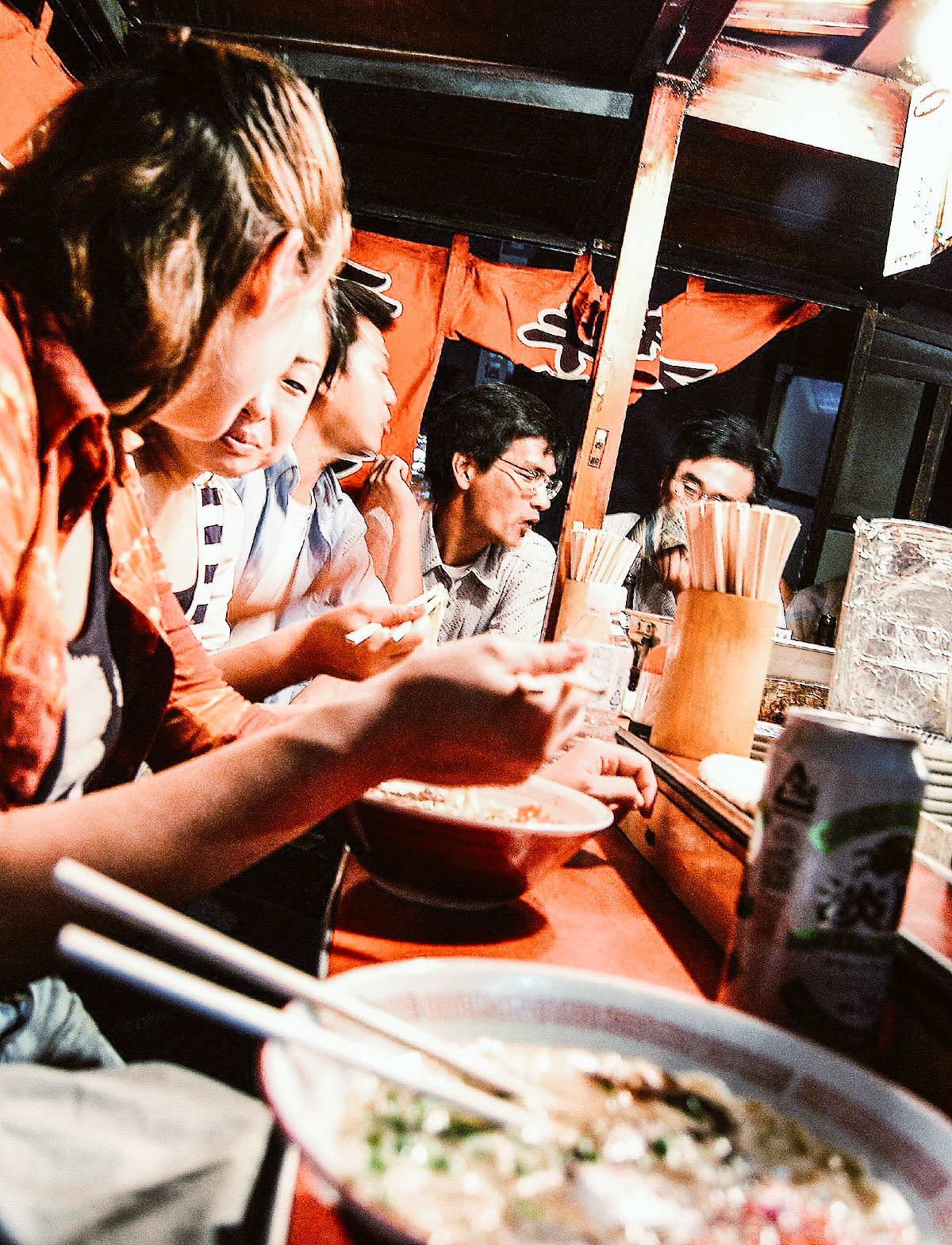
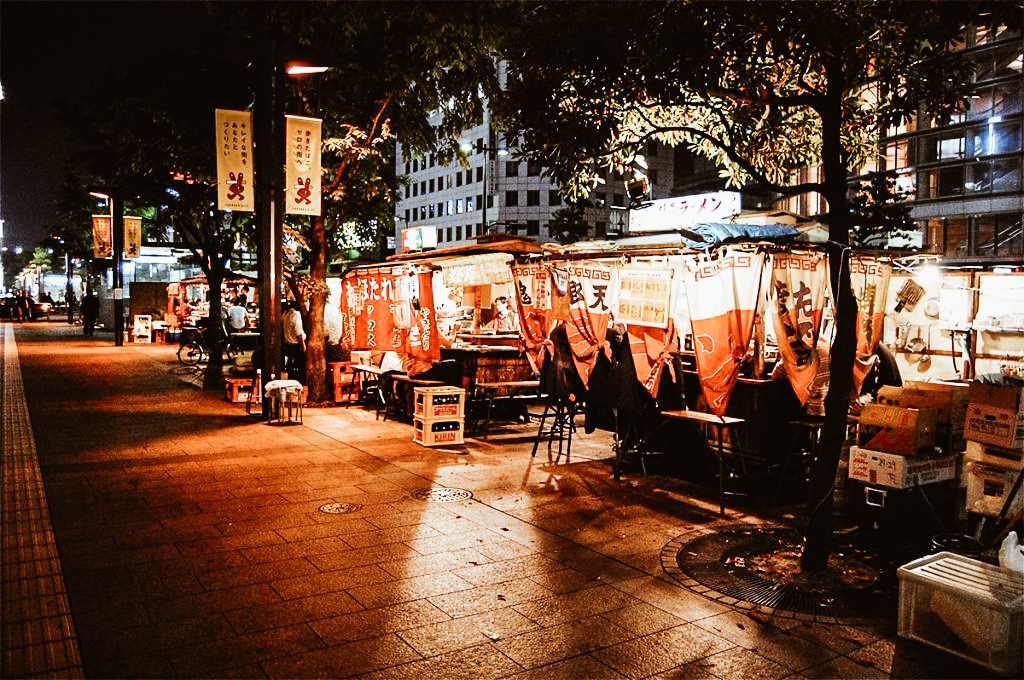
photo credits: gaijinpot.com
Traveling in Japan means not only visiting the various cities but also experiencing all the traditions of the culture of the rising sun. In fact, in the prefecture of Fukuoka, around 5 pm, the streets fill up in anticipation of the evening and it is here that we can find the many yatai, street food stalls. Outside the stations, at the corners of the most famous intersections, along the river and even on the streets of Nakasu, we find these typical street shops.
The food served here is mainly street food that focuses on Tonkotsu Ramen, the specialty of Fukuoka, but also yakitori and other delicacies. However, one of the things they have in common is the atmosphere, the people who crowd these stalls, and the managers who try to place as many orders as possible. A true moment of tradition and a cross-section of Japanese life not to be missed.
Tokushima Prefecture: Iya Valley
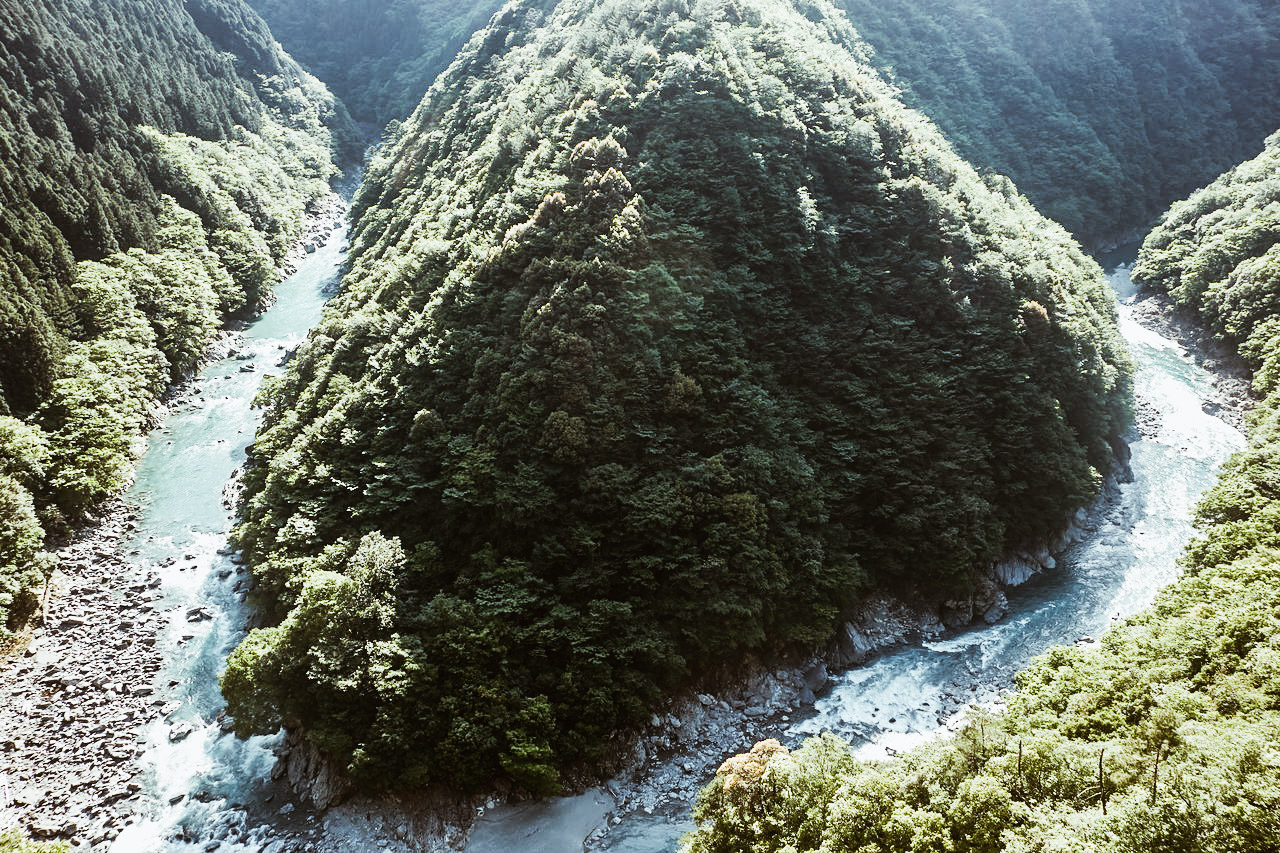
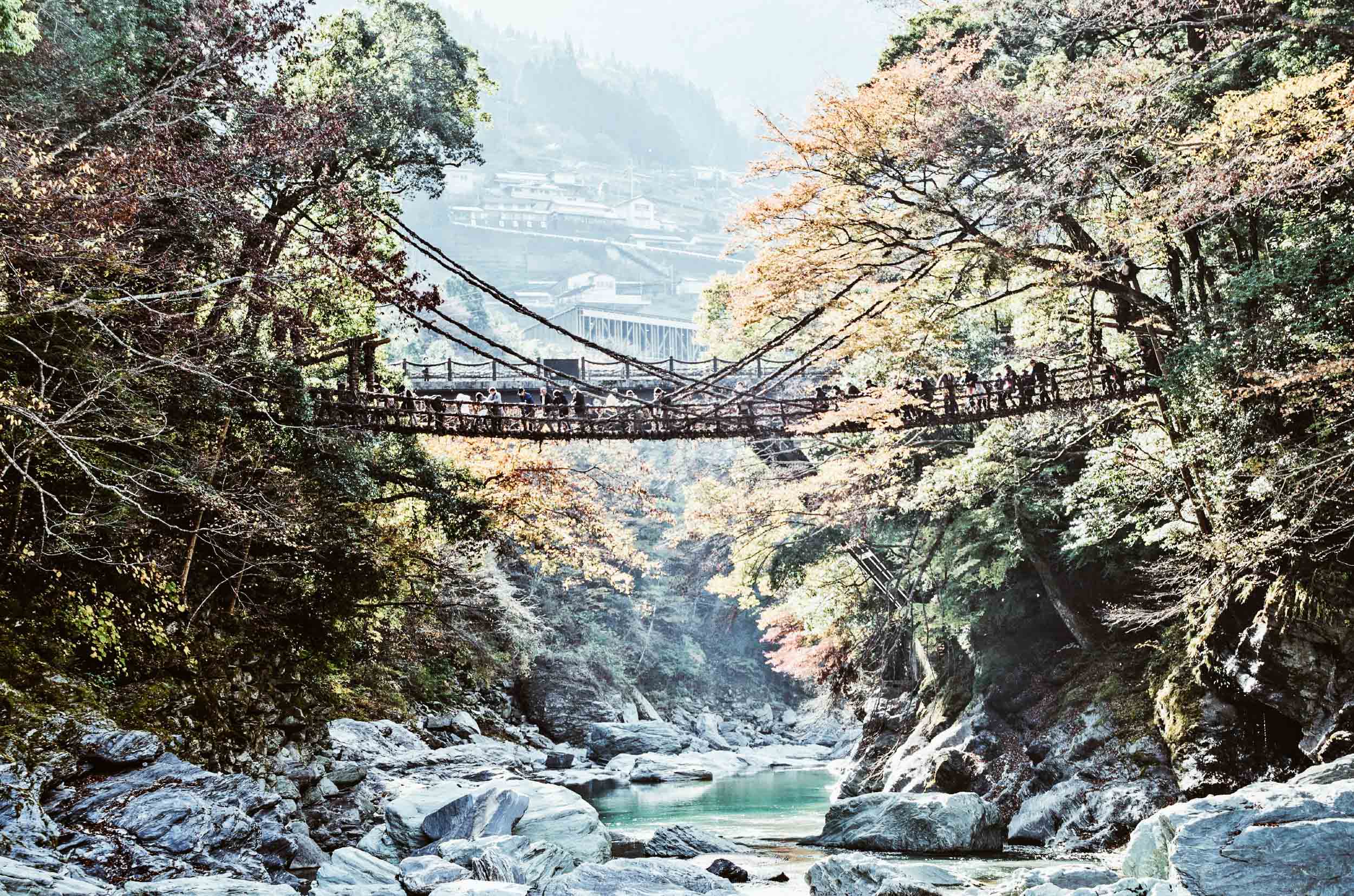
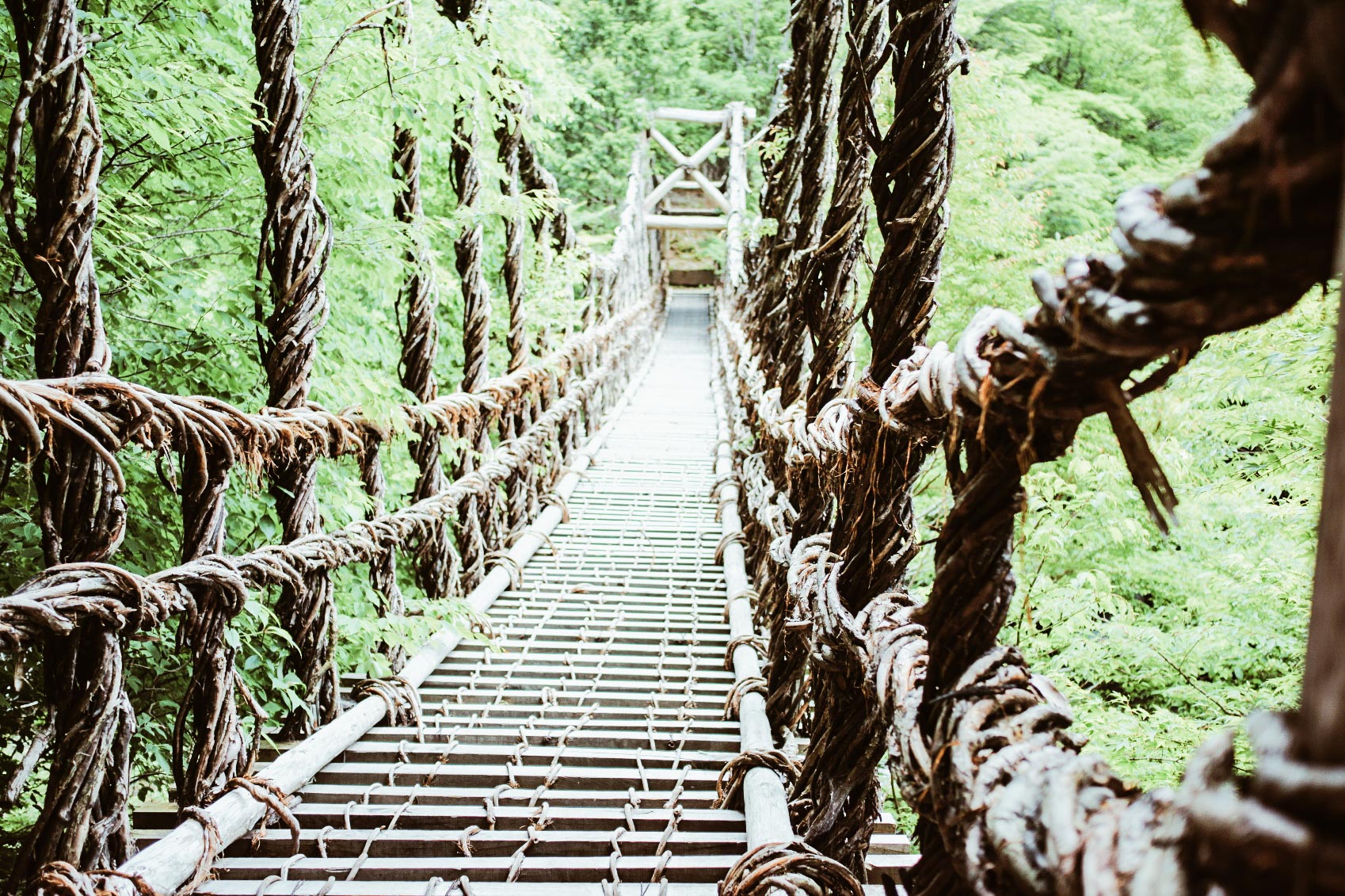
photo credits: tripadvisor.it, gaijinpot.com
If you are planning to travel to Japan, you absolutely must include this destination within your destinations to visit. In the heart of Shikoku, we find the Iya Valley, an almost magical place to explore, with turquoise waters and lush mountains. Here you can not only immerse yourself in nature and the real Japanese countryside, but we can also find cheap accommodation and excursions for all adventurous tourists. In fact, here you can discover a remote, mountainous Japan with thatched-roofed houses, traditional thatched vine pits, and the famous 88 temples of Shikou. A destination not to be missed.
Okinawa: Kerama Islands


photo credits: watabi.it, viagginews.com
Okinawa is not only one of the most beautiful places in Japan but in the world. Between white beaches and crystal clear waters, the Kerama Islands are a jewel of nature. There are quick ways to get to the main island, however, taking a cruise from Kagoshima will help you discover places unique in the world. Passing between the islands of Okinoerabujima and Tokunoshima, you will see spectacular landscapes hitherto unknown to you. Among sea breezes, snorkeling with turtles, and trekking on the abandoned roads of Zamami Island you will discover a hidden world of corals and colorful fish.
Prefecture of Niigata: Museum of Northern Culture
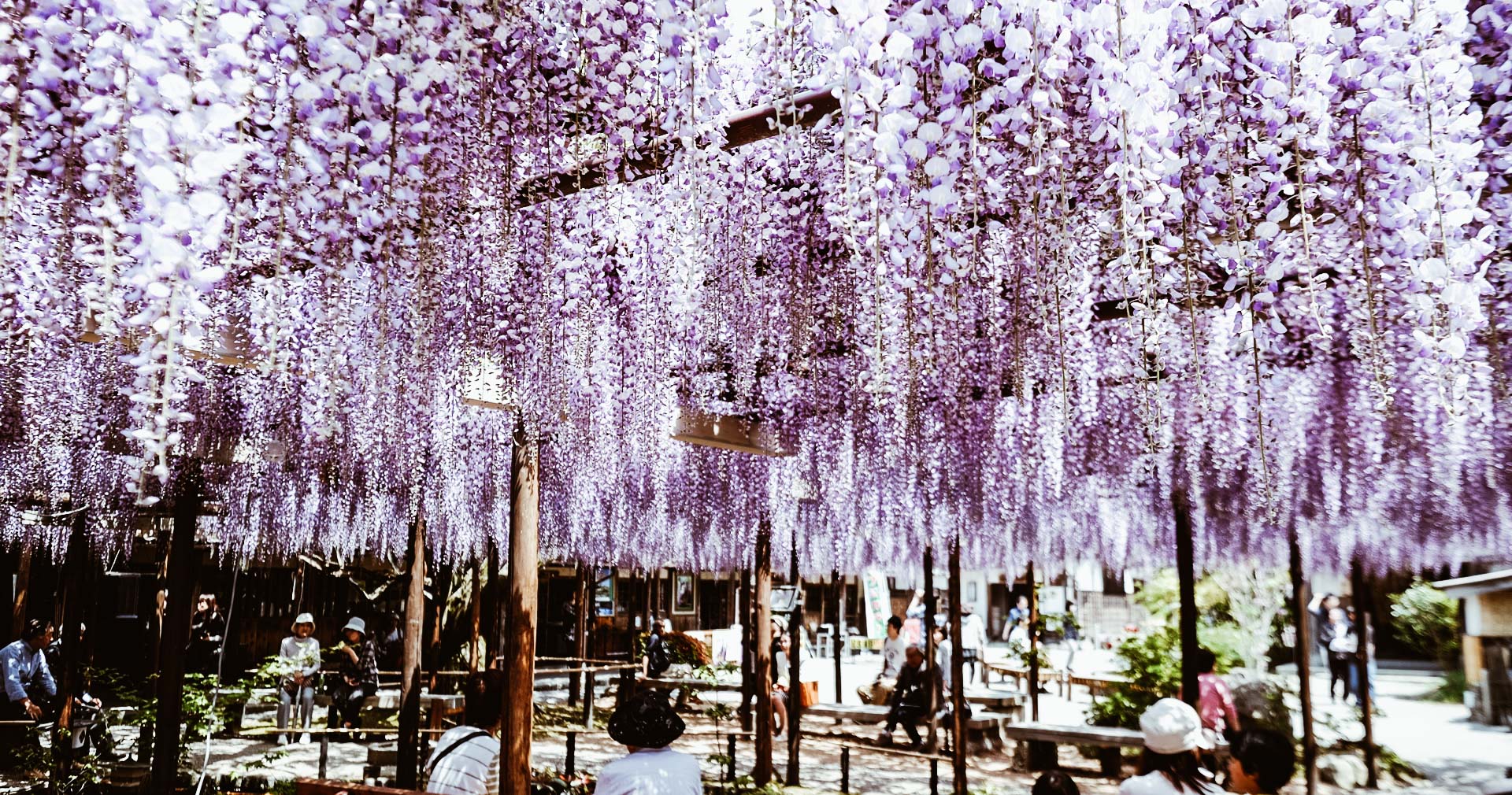
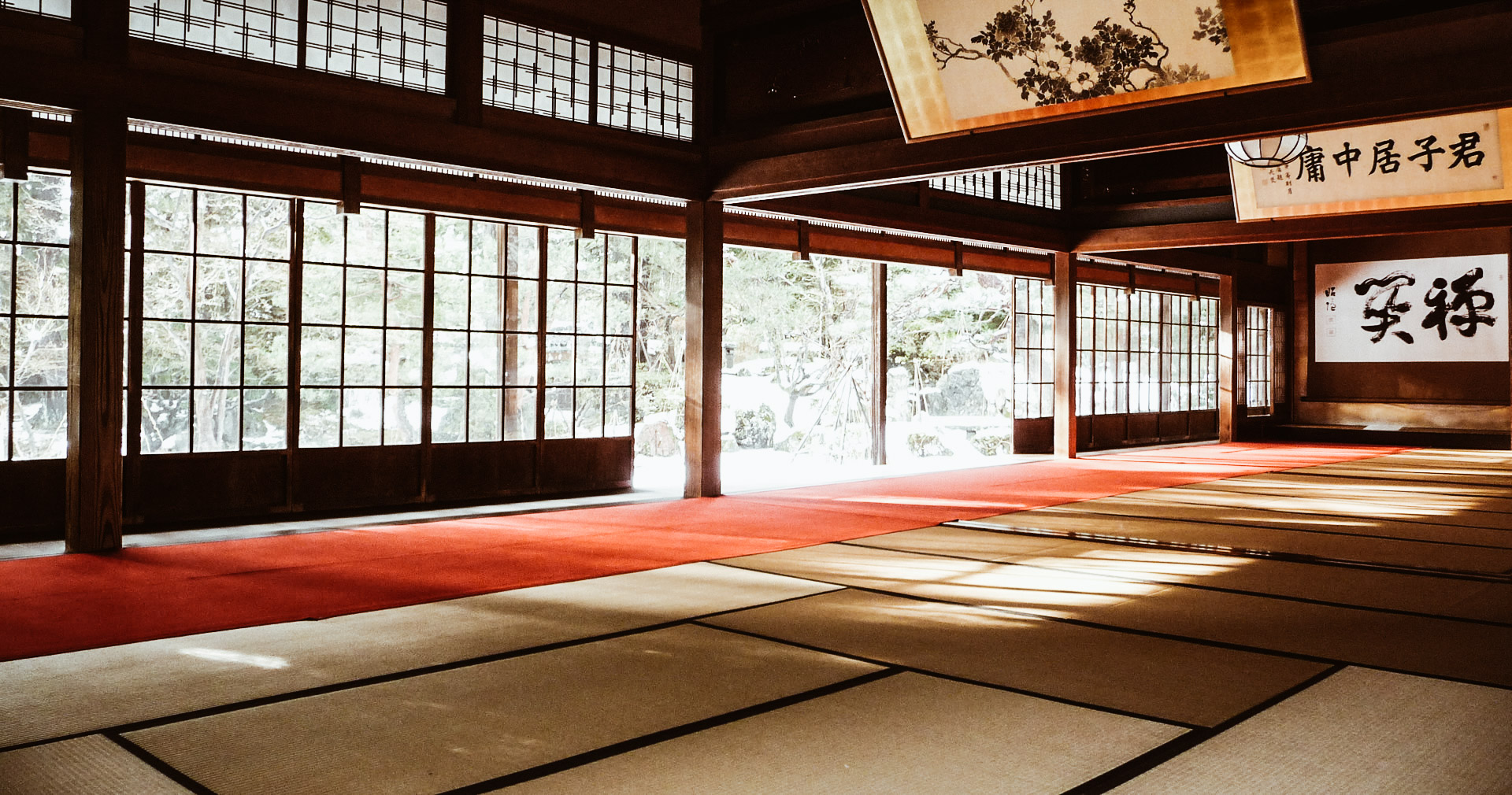
photo credits: hoppou-bunka.com
You can find the Museum of Northern Culture in the village of Soumi in the former palace of the Ito family. Here, the residence and garden were converted into a private museum after the war. With a landscape created by Taiami Tanaka over 5 years, the building houses a reception hall consisting of 100 meters of tatami. With a very special garden decorated with waterfalls, stone lanterns, wisteria, and miniature bridges, the park remains one of the main attractions of the area.
Not only will you feel relaxed to enjoy the view of this landscape, but you will also feel like you are going back in time. One of the most precious places in the prefecture.
We definitely recommend these destinations if you are planning to travel to Japan, and of course, we are curious about your feedback!
Far East Film Festival 22, this year in streaming
Far East Film Festival 22, this year in streaming
Author: Erika
This year due to the COVID-19 emergency many countries found themselves having to reorganize, or even cancel, several events. However, our friends from the Far East Film Festival decided to continue with the 22nd edition and found a perfect way to respect the rules. In fact, only for this year, the Far East Film Festival will be held from June 26th to July 4th via LIVE STREAMING, also thanks to the MyMovies live platform!

Face to face, Heart to Heart is this season's motto. Taken from the homonymous hit of the eighties, this is the perfect synthesis of this new edition.
An edition that does not give up and that will take place online! Face to face, through the thin glass of the displays, heart to heart, because the festival community in Udine is literally one big family.
From 26 June to 4 July, the structure of FEFF 22 will be remodeled. In fact, we are not only talking about a switch up, with the films in competition to watch on-demand but an authentic transformation. All content will be adapted, as far as possible, to the dynamics of streaming.
During these months of lockdown, the audience has already attended en masse the MyMovies platform as a virtual theatre. In fact, it will be here that the online streaming of all the films in competition will take place. Obviously, the whole will not only be a reservoir of titles but the meeting point for all the participants of the Far East Film Festival.
Moreover, from June 30th to July 2nd, Focus Asia, the festival's Industry area, will also be online, with the FEFF in progress section (the first and only European platform dedicated to Asian films in post-production), the project market and a rich webinar program.
The accreditation campaign will start in a few days, on June 1st to be exact and soon the staff of FEFF 22 will share the complete list of the broadcast schedule. Let the umpteenth journey, the umpteenth challenge, the umpteenth adventure begins!
Things to do during Quarantine: Traveling to Japan through Movies
Embark on a Journey to Japan through movies
written by: Erika | source: Tokyo Weekender
The long quarantine is almost over but travel is still impossible, so let's continue our section on things to do in quarantine, and today we will explain how to discover Japan through movies.
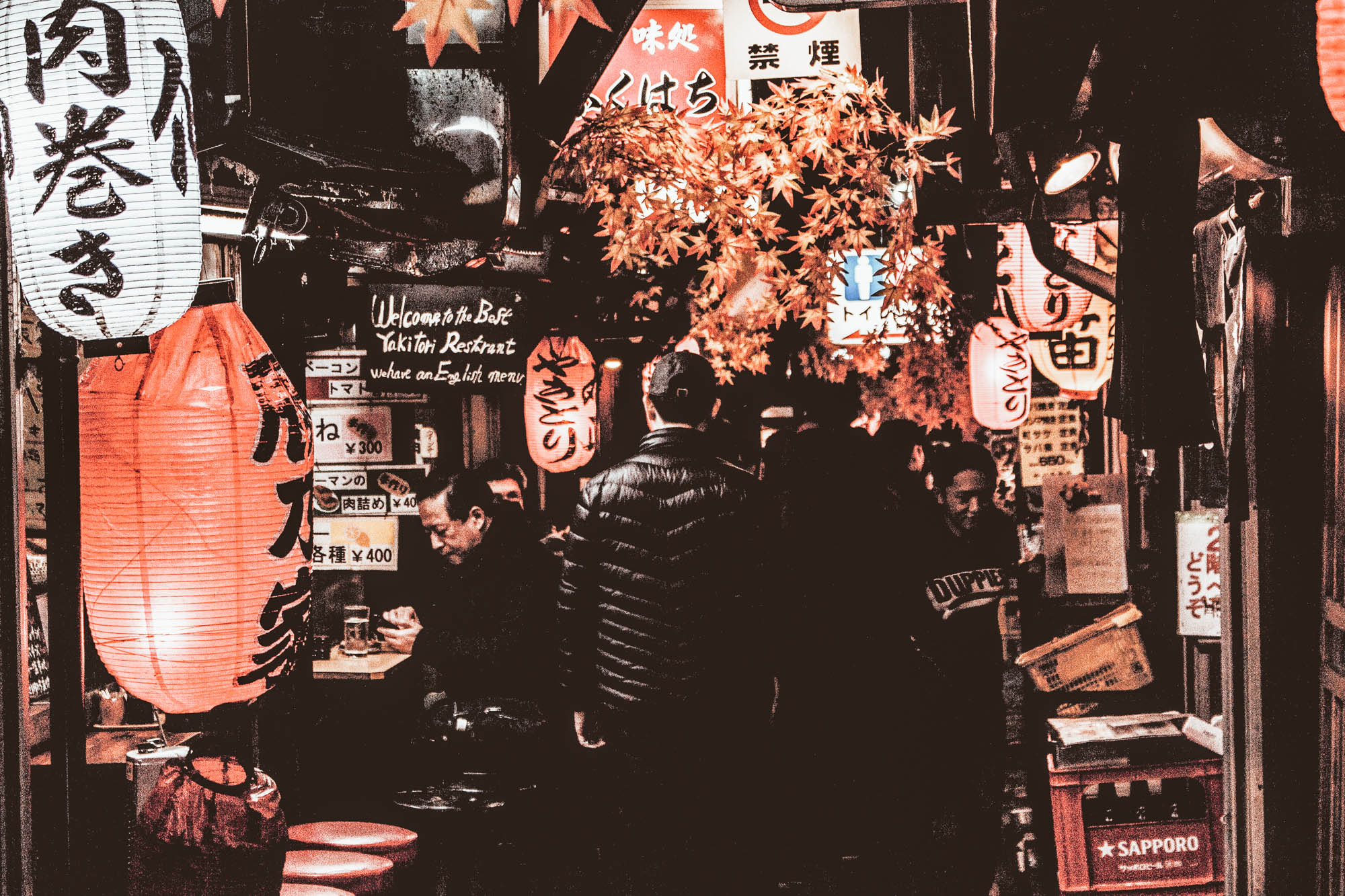
With the coronavirus pandemic, the world's borders closed, airports blocked and flights canceled prevented people from traveling. This not only caused the tourism business to drop but also prevented us from getting to know and explore distant countries such as Japan. Precisely for this reason, today we share with you a simple method to be able to explore the land of the Rising Sun directly from your home. In fact, here are 5 films that will help you experience Japan as we know it today and as it was long ago.
Departures (2008)
An Oscar winner, this beautiful film tells the story of the city of Sakata and its surroundings in the Shonai region of Yamagata prefecture, north of Japan. A work of art from the world of cinema, the film tells of a man who returns to his hometown after a failing career as a cellist. Here, the man begins a new life and a new career as a traditional funeral director. Unhappy with the situation but fighting against the prejudices connected to his new job, the man begins to love his new profession.
Initially regarded as a taboo, Departures then proclaimed the international recognition of director Yojiro Takita. Along with this, the building used for filming has become a very popular film location. However, the film's memorable scenes were shot in the countryside around the Gakko River and the snowy Mount Chokai. This feature is perfect for those who want to know the most rural locations in Japan and the more traditional customs of the rural life of the Rising Sun.
Memoirs of a Geisha (2005)
Famous film and Oscar winner, Memoirs of a Geisha is one of those must-have films related to Japan. From the award-winning director Rob Marshall, this movie has indeed changed the face of Kyoto tourism. Although the film was not entirely shot in this city, the story lets us travel to the Kiyomizu-Dera temple, through the torii of the Fushimi Inari and the Arashiyama bamboo forest.
The film tells the story of the life of a 9-year-old girl whose father sells her to a Geisha house. In fact, we will set off on a journey that will transform this little girl into one of the most sought after geisha of the time. Not only does this film help us discover landscapes and traditions that are now almost lost, but it brought the culture of Geisha to the west for the first time. However, at the same time, Memoirs of a Geisha is also a celebration of Japan's harmony and unique ways of life.
In fact, the traditional tea ceremony, the beauties of the Zen gardens, the classic Buddhist temples, the traditional houses of the Edo period in the historic Gion district are the backdrop to this story. A perfect way to describe magical Kyoto and the experiences that can be faced in the ancient capital of Japan.
Lost in Translation (2003)
The film that launched the careers of Sofia Coppola and Scarlett Johansson, together with Bill Murray, this movie tells the story of a couple of friends who meet in a hotel in Tokyo. Filmed almost entirely in Japan, here we can see the contrast between the nightlife of the city and the colorful and noisy districts of Tokyo, together with the calm of the temples.
Winner of two Academy Awards, the film is a journey into modern Tokyo life. Moving from the neon graphics of the Kabukicho streets in Shinjuku, up to the beautiful images of the famous Shibuya crossing, the Tokyo Tower and the Rainbow Bridge in Odaiba. In addition, the film also shows us the countryside when the protagonist embarks on a journey to Kyoto. In fact, from the shinkansen, we can see the flowing of the Japanese countryside arriving then to the Nanzenji and Heian Temples. Let's not forget the beautiful scene where Murray plays golf in Kawaguchiko with the iconic views of Mount Fuji.
In short, a must-see movie for anyone who wants to find out more about Japan.
Rhapsody in August (1991)
One of the last films of the revolutionary director Akira Kurosawa, this film is set in a small town near Nagasaki. With a compelling but minimalist narrative, the story is about four teenagers who visit their grandmother during the summer. With a backdrop of cicadas, forest adventures, rickety wooden houses, and Buddhist ceremonies, the kids face a perfect holiday in the countryside of Japan.
In a bucolic portrait of Japanese country life, the four teenagers spend more time with their grandmother, listening to her stories. Subsequently, in the second half of the film, we will be able to see Nagasaki after the war with the bright colors of youth. In fact, the four young people embark on a journey to see the bombing sites and the school where their grandfather was a teacher when the explosion occurred.
A film that allows us to know the world of Japan after the war, but which at the same time becomes a denunciation of the guilt of the wars themselves. Controversial but at the same time enlightening, Rhapsody in August is a truly unmissable film for anyone who loves cinema and Japan.
Times of Joy and Sorrow (1957)
This time the acclaimed director Keisuke Kinoshita tells us the story of a lighthouse keeper, his wife, and their travels in 10 different lighthouses along the coast of Japan. A relationship and travels that cover 25 years of marriage, through this film we discover Japan through several years starting in 1932.
The famous site of Kannonzaki, the nation's first lighthouse, worked as a set for the opening scenes. In fact, here we now find a statue of the protagonists of the film. Thanks to the amazing work of the director of photography, through this film we have the opportunity to embark on a journey through the various lighthouses of the nation. In fact, in this regard, we see the beautiful scenes of the Hajikizaki lighthouse on the island of Sado, a wonder for our eyes.
Subsequently, the couple's journey takes us to some of the most remote areas of Japan and the adventures and misadventures of the protagonists introduce us to the lighthouse's staff.
An exciting film that accompanies us on a postcard trip of the shores of Japan, between waves and cliffs, absolutely not to be missed.
Things to do in quarantine: Building a miniature Akihabara
Building miniature Akihabara in your home
written by: Erika | source: TimeOut Tokyo
Although things are starting to get better here in Italy, we continue our section on things to do in quarantine, and today we share with you how to build a mini Akihabara.


Akihabara is one of the favorite destinations for all otaku and fans of Japan, a historic district dedicated precisely to everything that is manga, anime, and video games. In this delicate moment, we are not yet allowed to travel. However, there is no need to take the plane to get to know new places and visit the ones we have already seen. In fact today we share with you the opportunity to recreate miniature Akihabara directly from your home!
In Akihabara, there are not only many places dedicated to that world that we would call nerd, but there are also many clubs and shops dedicated to various hobbies. One of them is the Mansei Club, a corner offering a variety of fun games, origami instructions, and paper models all for free.
If you're still stuck at home and don't know what to do, you can now recreate the iconic Tokyo neighborhood with these detailed paper models. In fact, the streets of Akihabara are all reported in these detailed scale reproductions. Creating this model is very simple, just follow the instructions listed in these PDFs available for free for download. In fact, these reproductions perfectly show the buildings of Akihabara and also where these buildings must be positioned. Although the instructions are in Japanese, it is actually very simple to follow them also thanks to the various illustrations.

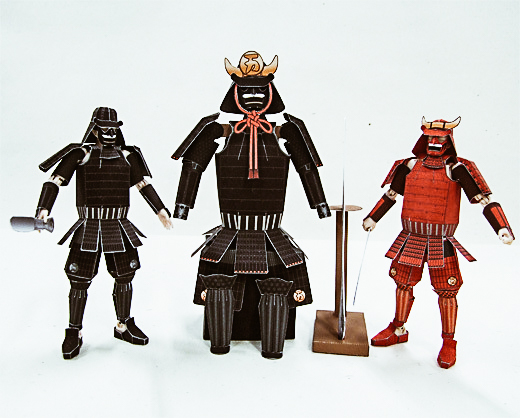
However, if building an entire neighborhood seems too complicated for you, don't worry there are many other possibilities. In fact, Niku no Mansei offers more than 50 paper models that you can download for free. With a design that varies from reproductions of famous Samurai up to reproductions of the most famous Japanese foods. In short, here we find the opportunity to satisfy every taste and every type of hobby! You just have to choose your model, download it, and get to work! We are curious to see the results!
Things to do in quarantine: Learn Japanese cuisine
Learn Japanese cooking with 5 YouTubers
written by: Erika | source: TokyoWeekender
We continue our column on things to do in quarantine and today we talk to you how to learn Japanese cuisine with the help of 5 YouTubers.
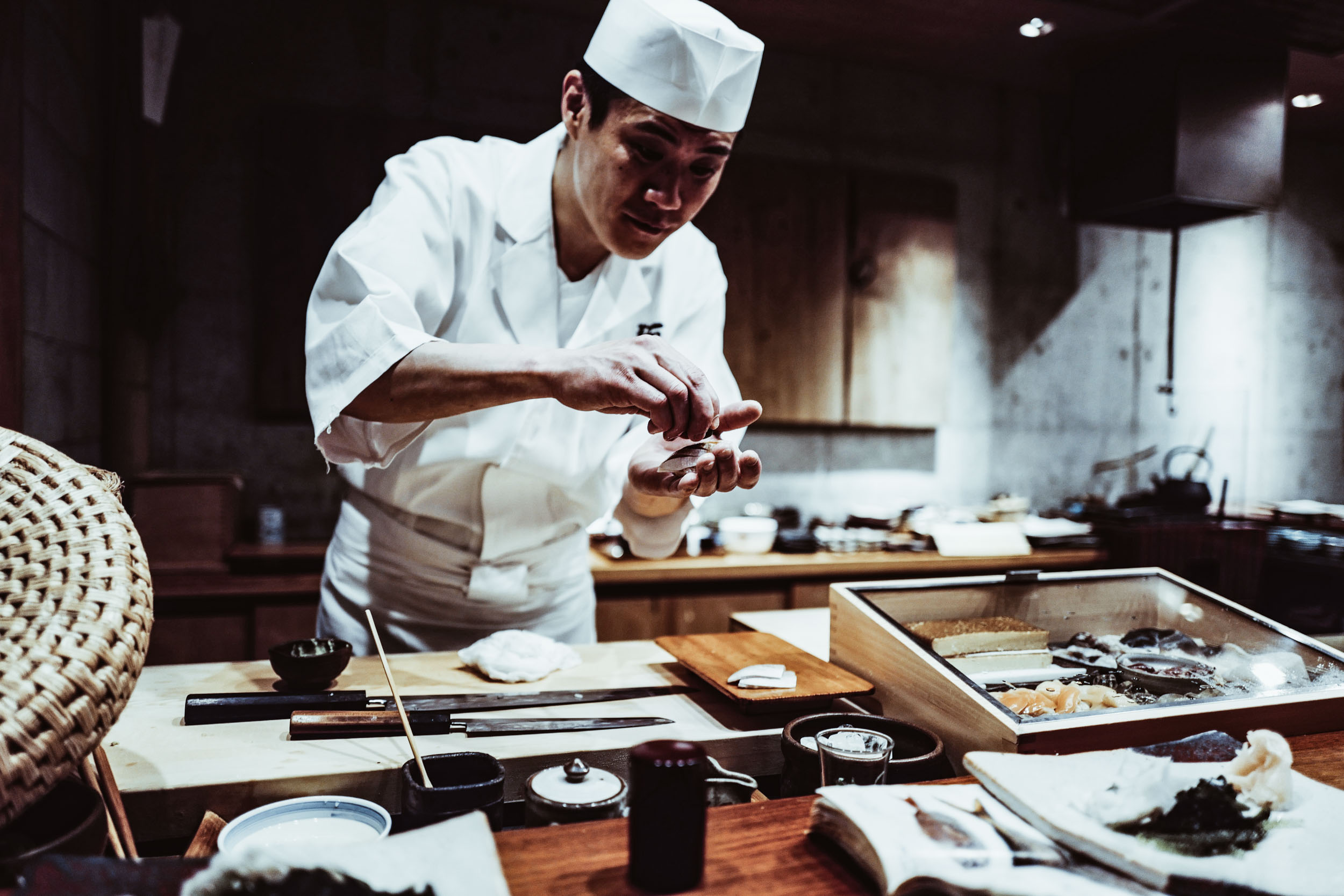
In these lockdown days, we are all trying our hand at new recipes and experimenting with new combinations of flavors. Here are 5 YouTubers to follow in order to learn Japanese cuisine and try out some dishes at home!
Tasty Japan
They are our favorites. A lot of simple recipes to follow, with all the ingredients easily recoverable in any part of the world you live in. From desserts to first courses, from quiches to second courses. Authentic and fun, Tasty Japan engages the viewer with educational videos and many guests. Almost all the videos have English subtitles and all the presenters are very funny and full of energy, making even the most complicated dishes easy to do. Videos that fall into the #foodporn category par excellence, make sure you're on a full stomach when you try to cook these delights.
Ochikeron
Mother of two, the protagonist of the channel Ochikeron creates dishes to allow the whole family to cook together. In fact, the simplest dishes on the channel can be cooked together with the little ones too. However, more complicated dishes that require more time and energy are available for all those fearless enough to try all these new recipes. All this makes this channel a unique world for all those kitchen projects to be created together. Furthermore, if you are fed up with the usual dinners, this is the right place to find new ideas.
Japanese Cooking 101
With a huge selection of videos, Japanese Cooking 101 not only offers dishes easy to make, but more complicated processes can also be found. From Karaage to fried rice with chanko nabe, a perfect hot-pot style dish for the winter, this youtube channel is a real catalog of Japanese cuisine. In fact, we can find a lot of recipes to experiment and each video shows a complete list of ingredients together with instructions on how to create the dish. Although other channels have some entertainment, Japanese Cooking 101 has a more didactic and dry approach, but very easy to follow.
Diaries of a Master Sushi Chef
If, however, like many Westerners you love sushi too, Hiroyuki Terada's channel is the one for you! The diaries of this master sushi chef will teach you how to juggle knives, fillets, and much more. In fact, on this channel, you will find methods to create delicious sushi but also dishes such as chicken teriyaki and many other izakaya-style delights. With collaborations of the caliber also of Chef Ramsey, this is the channel for all those who want to seriously try their hand at learning the art of sushi.
Aki’s Japanese Recipes for Vegans
Vegan and vegetarian restaurants are difficult to find in Tokyo, this has led to the creation of various YouTube channels including that of Aki. In fact, on this channel, you can find the best recipes for all those who love unconventional cuisine. A real sensorial experience in HD for an accessible channel and with the instructions written in Japanese and English. In addition, Aki, the protagonist of the channel, always takes the time to better explain his recipes and ensure that the dishes always look good.
Mame Kurogouchi x TOD'S
Mame Kurogouchi x TOD'S, when Made in Italy encounters with Japan
written by: Erika | Photo courtesy of TOD's
Japan and Italy have always been linked by many things, the love for art and fashion is one of them, hence the new collaboration of Mame Kurogouchi with TOD's.

TOD's, historic Italian brand founded in the early 1900s by Filippo Della Valle, is today one of the most known brands in the world. The fashion house became famous for its iconic footwear, and today, under the guidance of Diego Della Valle, it holds a large slice of the Italian fashion market. With the always impeccable, classy, minimal, and chic design, TOD's has always winked a little at what are also the characteristics of Japanese design. For this reason, we are not surprised by the collaboration with Maiko Kurogouchi, designer of the Mame Kurogouchi brand.


The designer is the new guest of T-Factory, a project launched by Diego Della Valle in 2018 that previously involved Alessandro Dell'Acqua and Alber Elbaz. A collection of 26 pieces of clothing and accessories launched online on March 27 which focuses on shades of white and blue navy. Along with this, we also find pure and architectural silhouettes for both clothes and footwear.
Maiko, aka Mame, Kurogouchi
Born in 1985, originally from Nagano, the designer founded the homonymous brand in 2010, combining minimal and clean aesthetics with the more traditional aesthetic of Japan. In fact, she draws a lot of inspiration from everything in her Japanese DNA, from hand sewing to the traditional way of wrapping foods and packages.
The connection with TOD's started in Paris after a conversation with Mr. Della Valle. In fact, the two creatives discovered that they have a lot in common starting from their visions. A brand idea with a timeless elegance, which respects the traditional craftsmanship and an aesthetic linked to the concept of travel. These are also the basic elements of the collection designed for the brand.
"I am concerned that every woman can wear these pieces, and that in doing so she feels safe, at ease"



Acclaimed as one of the best emerging designers in Japan, Mame Kurogouchi has reworked the key garments of the brand, changing all the details to fully blend this meeting between Italy and Japan. With precision and passion, Kurogouchi has transformed everyday life into something elegant both for clothing and accessories. Mixing classic Japanese design with contemporary silhouettes and sporty fabrics, Mame Kurogouchi thinks about what is really necessary for a woman.
The collection
A 26-piece collection that draws and winks at Japan in many details. Among the key pieces, we find a single-breasted trench coat with shirt-style collar and leather pockets, trapeze pullover tunics with kimono sleeves and shirts with puffed sleeves and a belt that refers to the Samurai ensamble. In addition, practicality is the main focus of each garment together with the modernization of the brand's iconic pieces. In fact, Mame Kurogouchi reinterprets the classic ring bag discovered by the brand archive, making it a perfect piece for all women on the go but also looking for elegance, lightness, and versatility.



Another element that recalls Japan are all the intricate embroideries that, according to the designer, recall the Kogin-Zashi sewing techniques. Furthermore, the designer found several similarities from the TOD's archives with Japanese artisanal work, despite the geographical and cultural distance between Italy and Japan. In this regard, the straps on the accessories become a symbol of closeness even between the two nations and cultures. A perfect blend of old and new but also between Japan and Italy.
The Mame Kurogouchi x TOD'S collection, available on the e-commerce of the brand, is only the first step towards the international growth of this young and talented designer.
[ngg src="galleries" ids="4" display="basic_thumbnail" thumbnail_crop="0"]
Things to do in Quarantine: the best podcasts about Japan
The best Podcast about Japan
written by: Erika | source: TimeOut Tokyo
Let's continue our feature on things to do in quarantine and today we talk to you about some podcasts dedicated to Japan.
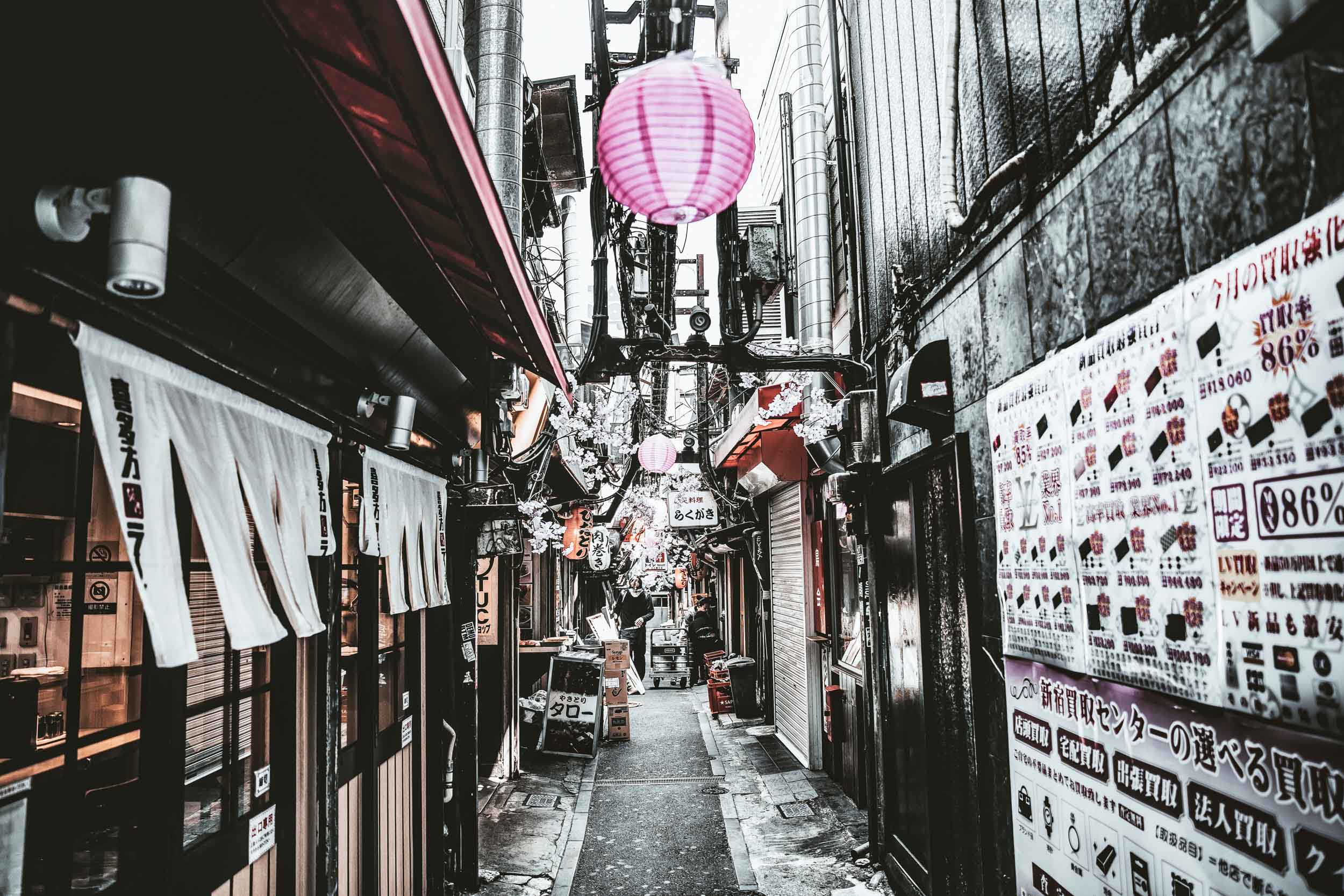
The COVID-19 emergency has practically made it impossible to plan trips for at least another year. However, for all fans of Japanese culture, today we share with you an easy and fun way to learn more about this topic. In fact, there are several podcasts that can fill this void by helping you discover Japan's many facets. In fact, through these audios, it will be possible to discover the many hidden aspects and facets of the Rising Sun without having to face crowded flights and trains.
For example, are you aware of why spider lily flowers are located near Japanese cemeteries and rice fields? Do you know who the pioneering women of the Rising Sun were? These podcasts will not only delve into the food, history, and legends of this country but will also answer questions you didn't even know you had. So, in this moment where we cannot go out and travel, let these podcasts take you on a few minutes journey through Japan.
Japan Eats - Learn about Japanese cuisine

Japan Eats is a podcast of a historic Brooklyn-based radio focused on food. Presented by Akiko Katayama, Japanese cuisine journalist and director of the New York Japanese Culinary Academy. Here we talk about everything from the various trends of Japanese cuisine, to drinks and much more. In one of the recent episodes, Akiko focused even on how to live a vegetarian life in Japan, the art of the Yakitori and more. The podcast already has more than 180 episodes with a new one every week.
Uncanny Japan - All Japanese legends in one podcast
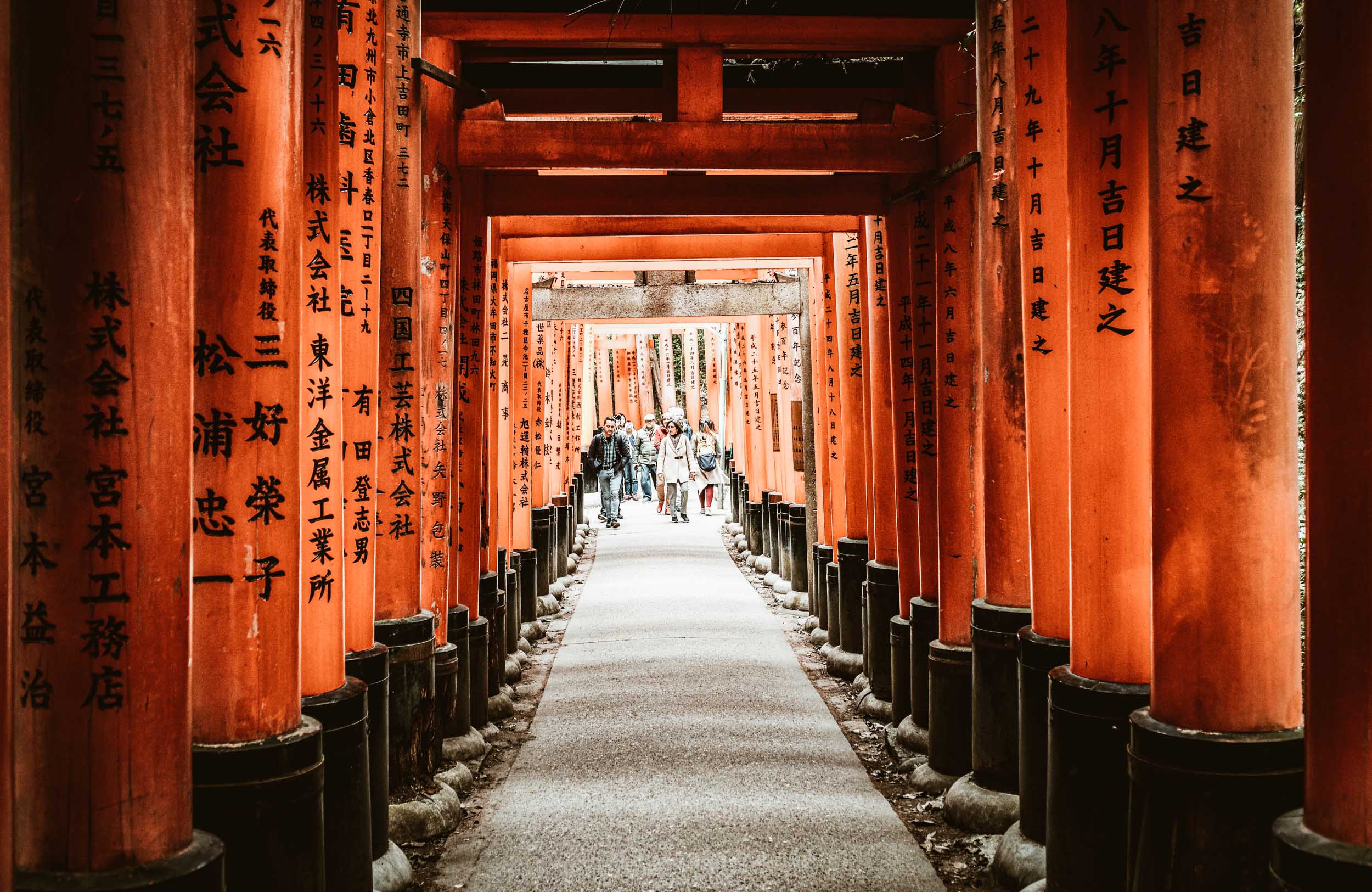
Theresa Matsuura, an American author who has lived half her life in a fishing village in Japan, presents Uncanny Japan. In this podcast, Matsuura talks about those parts of Japanese culture that are often invisible or inaccessible to anyone who does not speak the language. At the same time, it offers an insight into local customs, legends, folklore and superstitions of the rising sun. Ready to immerse yourself in the imaginative and sometimes even spooky Japanese fairy tales?
History of Japan - Learn Japanese history
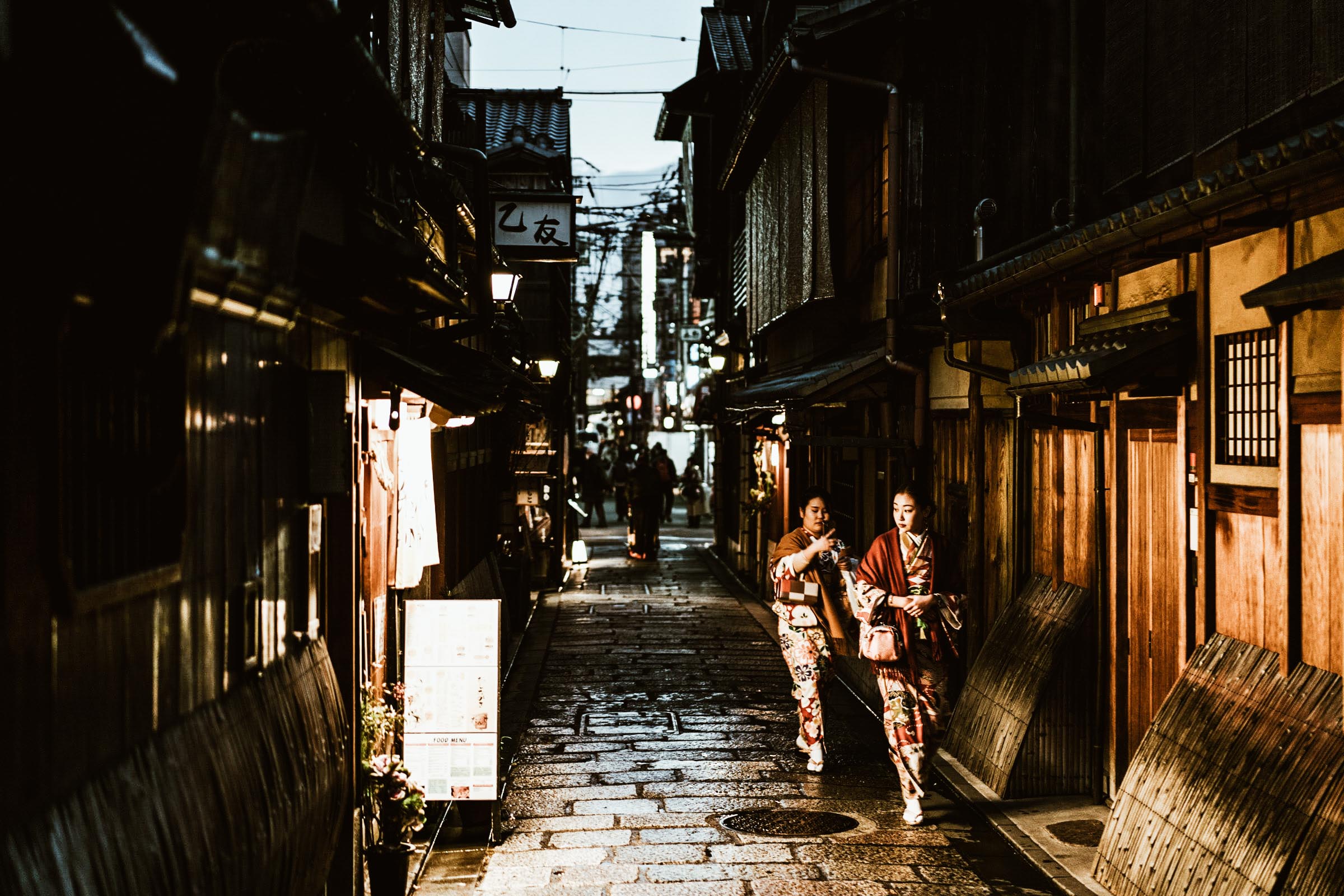
Isaac Meyer, a teacher with a PhD specializing in modern Japan, leaves nothing hidden in this historical podcast. From ancient to modern Japan, passing through poets, political scandals, economic booms, samurai, geishas and much more. Indeed, this podcast is an in-depth look through the history of the rising sun in each episode. Informative but also fascinating to hear, History of Japan has more than 300 episodes that can keep you company in this lockdown period.
Voices in Japan - Life in Japan

Ben and Burke, expats in Japan who live in Hokkaido, share their life experience in the land of the Rising Sun. The podcast Voices in Japan talks about their life from work to studying the Japanese language, and also learning the customs of the nation and much more. The weekly episodes include general topics related to living in Japan such as a look at the Japanese health system. In addition, the talk also revolves around the love of technology, Sumo and the potential benefits of the Japanese diet. Whether you live in Japan or just want to hear more about life experiences, this podcast is ready for you.
Sake on Air - All about the world of Sake
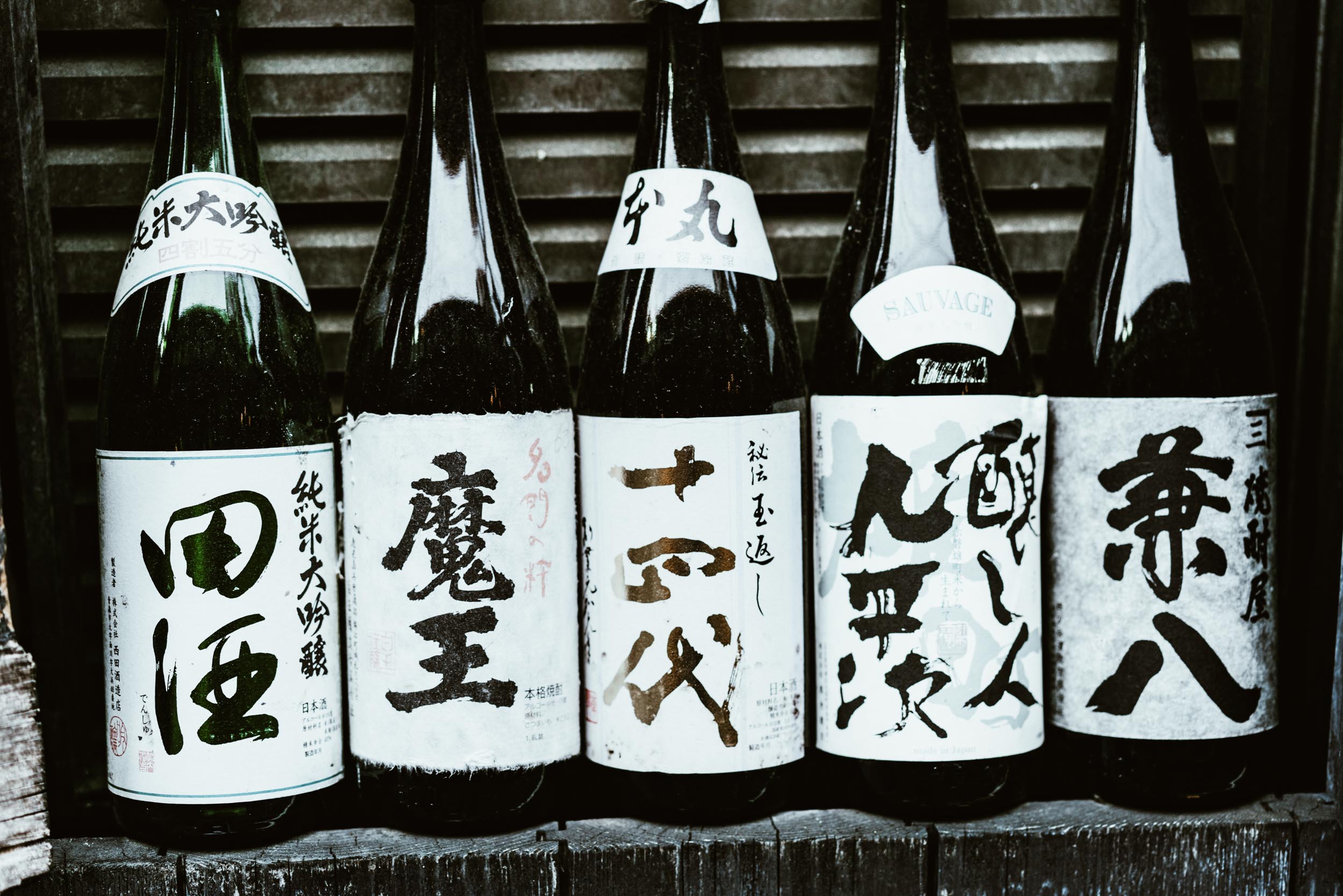
For all fans of Sake and shochu, Sake on Air is the podcast made for you. The experts of this famous Japanese drink share their knowledge in each episode, inviting us to this virtual dinner. In fact, in each episode, we find a different topic such as new trends in manufacturing, stories from producers but not just this. We can also learn about the various flavors, the difference between the rice used and how to combine the various flavors of Sake with food. So, if you are also curious, arm yourself with a glass of wine or your favorite sake and listen to this podcast!
Things to do in Quarantine: create an edible Zen garden
Creating an edible Zen garden
written by: Erika
The world is still in lockdown and in the absence of things to do we can give ourselves crazy joy in the kitchen, that's why today we share a new idea with you, create an edible zen garden!
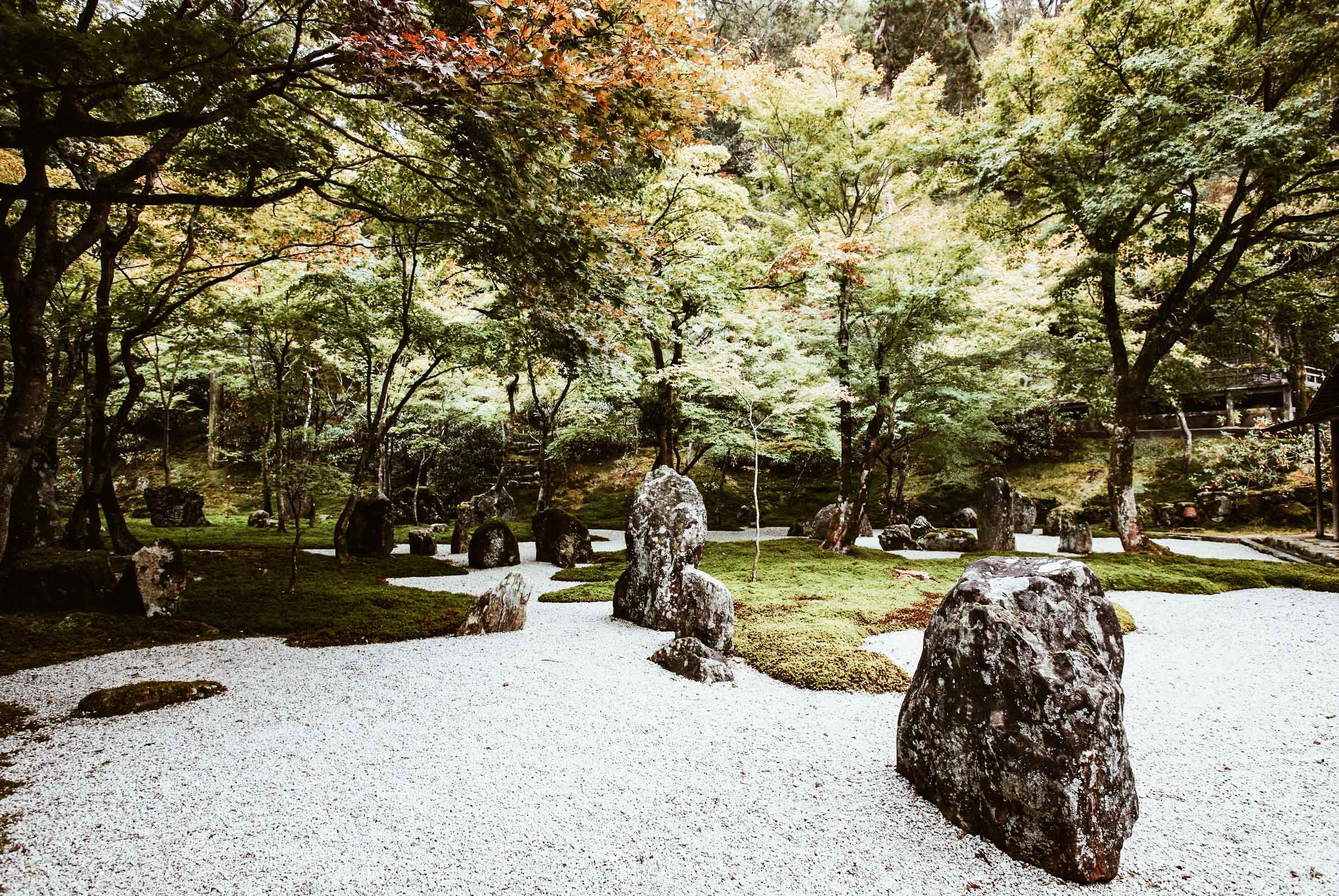
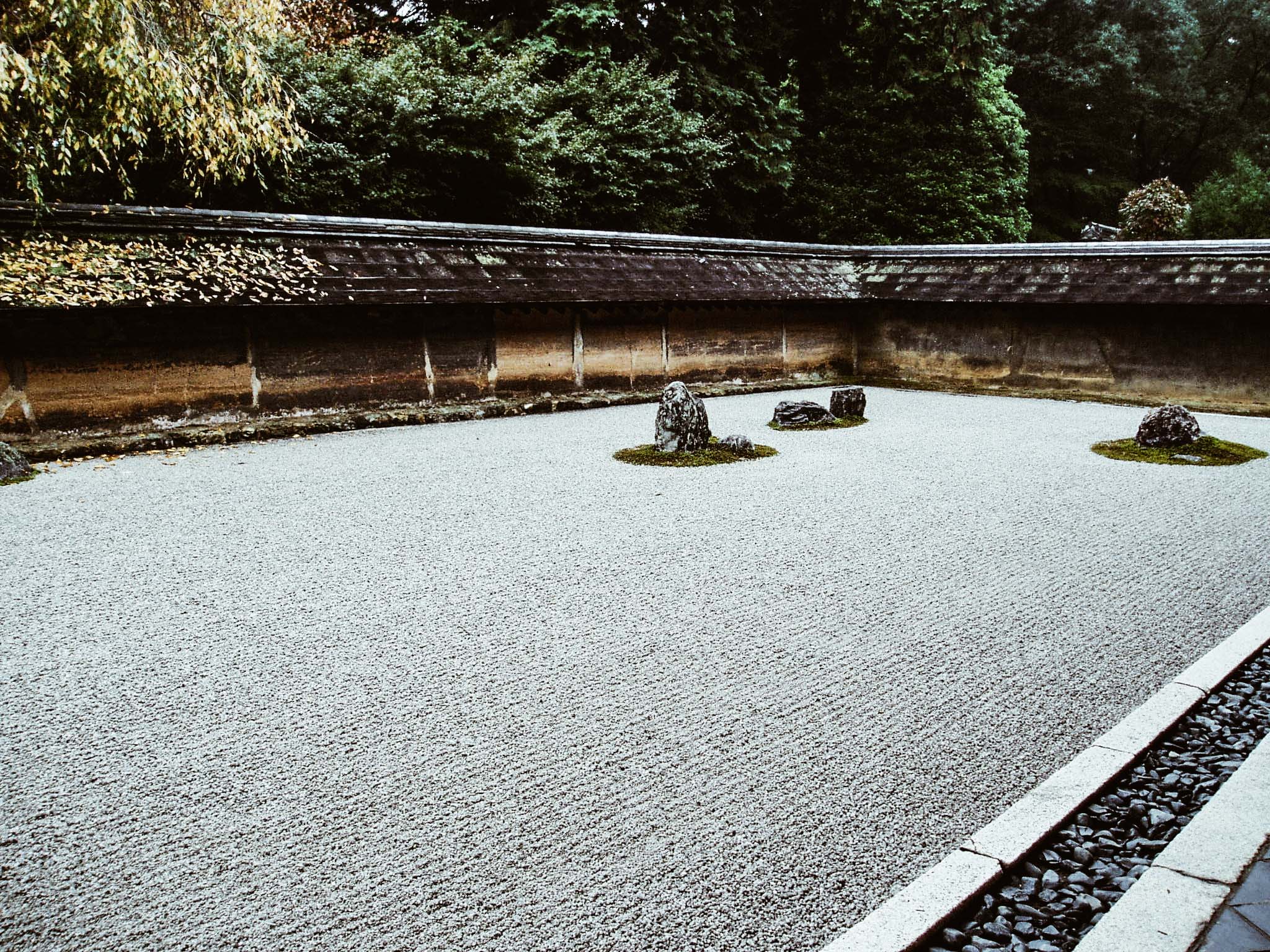
In Japan there are mixes made specifically to share this experience with the whole family, even together with the little ones. Instead, today we offer you a variant to be created directly at your home with ingredients easily available in any supermarket.
In every self-respecting Zen garden we find rocks, sand or gravel, greenery and some stones to be able to cross it without disturbing its tranquility. By following our instructions, you can recreate exactly this atmosphere.
Step 1: The Rocks
As you well know, a fundamental ornament of the Zen garden are these huge stones present inside. In our recipe, we are going to create stones with simple brownies.
Brownies - Ingredients
|
|
Brownies are easy to make and won't take too long, so start chopping the chocolate coarsely and melt it in a water bath. When it is almost melted, add the soft butter cut into small pieces.
Stir thoroughly until everything melts in a water bath and then remove it from the heat. Then let it cool, stirring it occasionally.
While you wait for the chocolate to cool, take the hazelnuts and let them toast in a preheated oven at 180° for about 7/8 minutes. Once out of the oven, let them cool in order not to burn you, then chop them coarsely and keep them aside.


Let's move on to the next step, put the eggs in a bowl and begin to beat them and then add the sugar. It is not necessary to whip the mixture, but continue to beat only until the sugar is well dissolved. At this point, add a pinch of salt and let it dissolve too. Still with the whips in action, slowly add the chocolate and butter mixture that will have cooled down by now.
As soon as everything is mixed, stop whipping. Take a narrow mesh strainer and sift through the flour. Then, mix everything with a spatula until the flour is absorbed uniformly. Then take the chopped hazelnuts and mix everything.
After having greased and lined a baking sheet, pour the dough inside by leveling it with a spatula so that it is evenly distributed. Bake in a static and preheated oven at 180° for 25 minutes, then take out of the oven and leave to cool. At this point, with a knife, you can create the rock-shaped pieces for your zen garden!
Step 2: The gravel
Another fundamental element for a Zen garden is gravel, a symbol of tranquility and purity. But let's see our suggestions to create this element!
Almond crumble - Ingredients
|
|
With the crumble, we are going to create most of our zen garden so we start by preheating the oven to 180°. As the oven heats up, we take the almonds and start peeling them. Then, we take a baking sheet and place it on the baking tin.
Next, we toast the almonds for 7/8 minutes inside the oven, then let them cool and finely chop them with a knife. Afterward, we take the 0 flour and mix the chopped almonds inside with the brown sugar. When we have an amalgamated mixture, we take the butter and cut it into cubes and then add it inside the same mixture together with the vanilla seeds.

Work the whole mixture with your fingertips until a grainy mixture is obtained. Alternatively, it is also possible to prepare all this with a mixer but the crumbs that we are going to get will be coarser.
At this point, you should have obtained a mixture that is somewhat reminiscent of shortcrust pastry. Leave it to rest in the refrigerator for at least 30 minutes, then spread it on the oven paper and then bake it for about 15 minutes at 180° in a preheated oven. Once the cooking is complete, let it cool and then crumble it inside your dish ready for presentation. Cover everything with icing sugar to recreate the effect of the white gravel typical of Zen gardens.
Step 3: Green
Japan is one of the greenest lands and all major Japanese cities are full of large parks. Of course, even in our edible zen garden you can't miss a green area.
Matcha Chiffon Cake - Ingredients
|
|
This is the most difficult part of our recipe, but don't be afraid, if you follow the instructions step by step you will be able to complete this part too. Let's start by preheating the static oven to 150° and preparing an aluminum cake mold. Make sure this mold is tall enough as our chiffon cake will rise a lot.
Separate the yolks from the egg whites and in a clean bowl add the egg whites with the cream of tartar, whipping the mixture until you get firm crests.


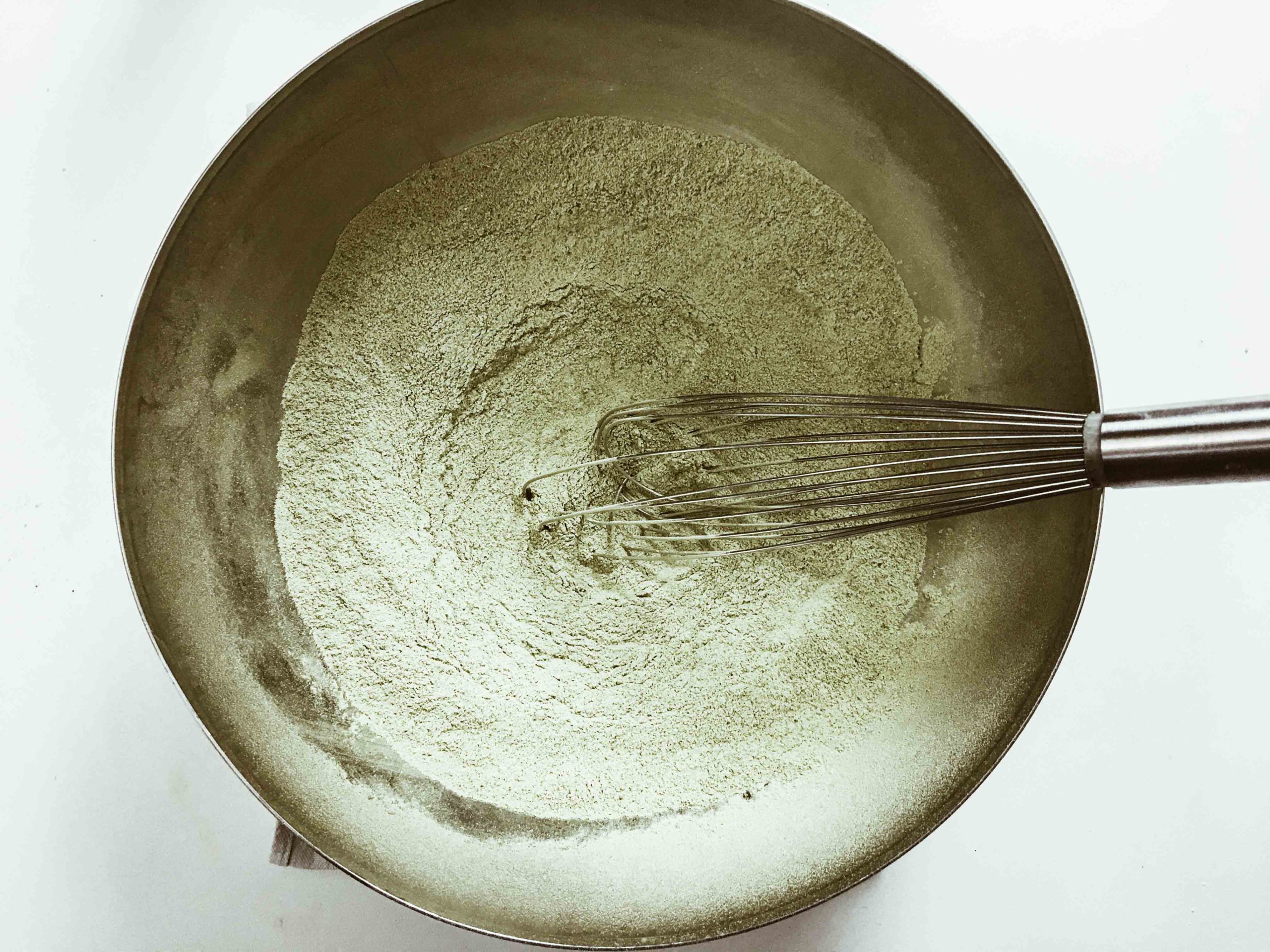
In another bowl sift the green tea, the flour, the baking powder, salt and sugar and with a metal whisk by hand make sure that everything mixes well. In a separate bowl, combine the water, oil and vanilla extract. Once you have everything well mixed, pour the yolks and the mixture with the water and oil into the bowl with the flour and green tea.
Mix everything with the metal whisk by hand until a uniform mixture is obtained. Then transfer 1/4 of the whipped egg whites into your dough and mix with a spatula to lighten all the contents. Whipped egg whites should always be mixed with a movement that starts from the bottom so that they do not lose the whipping. Next, incorporate the rest of the egg whites into three other additions.
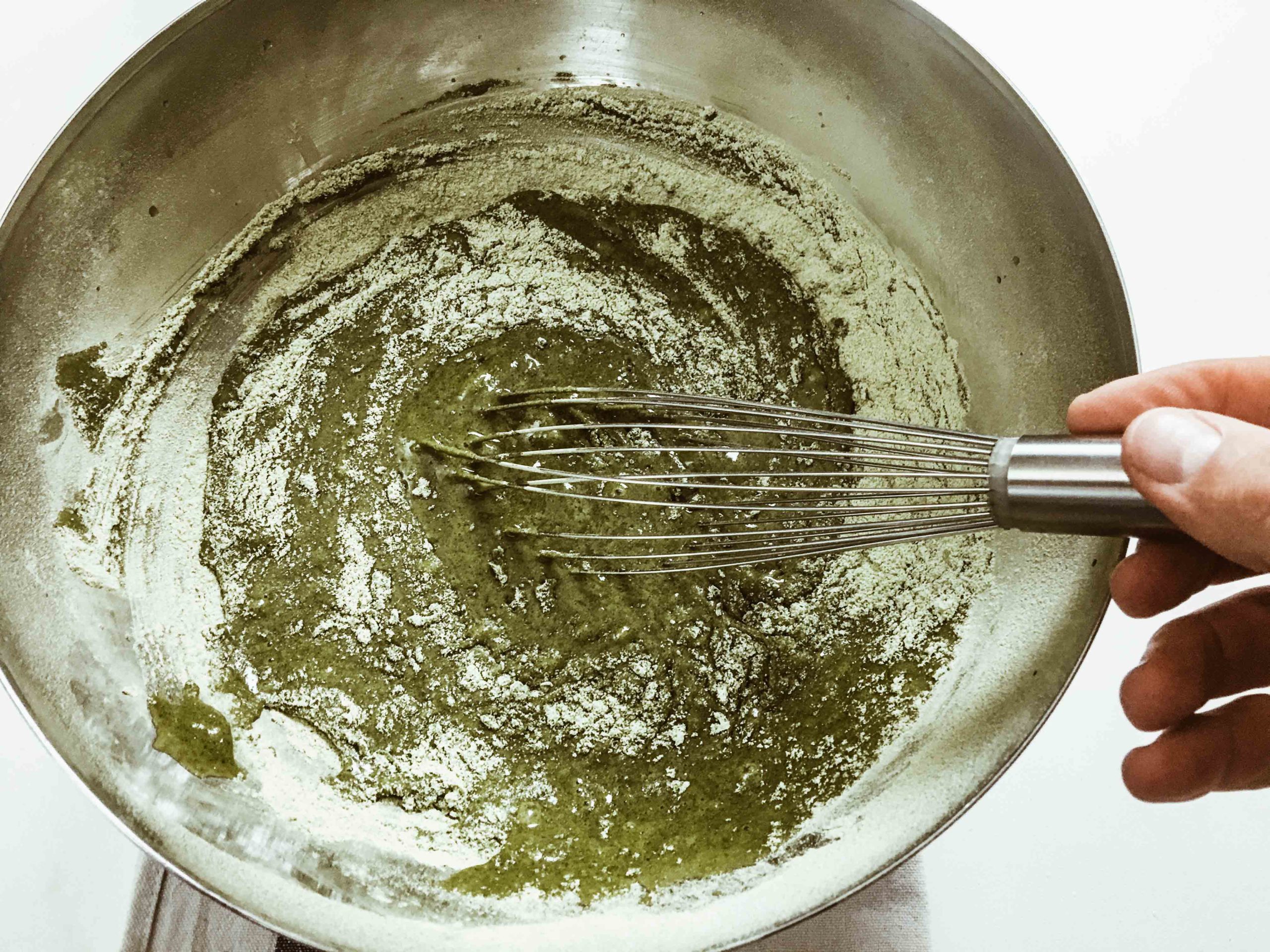
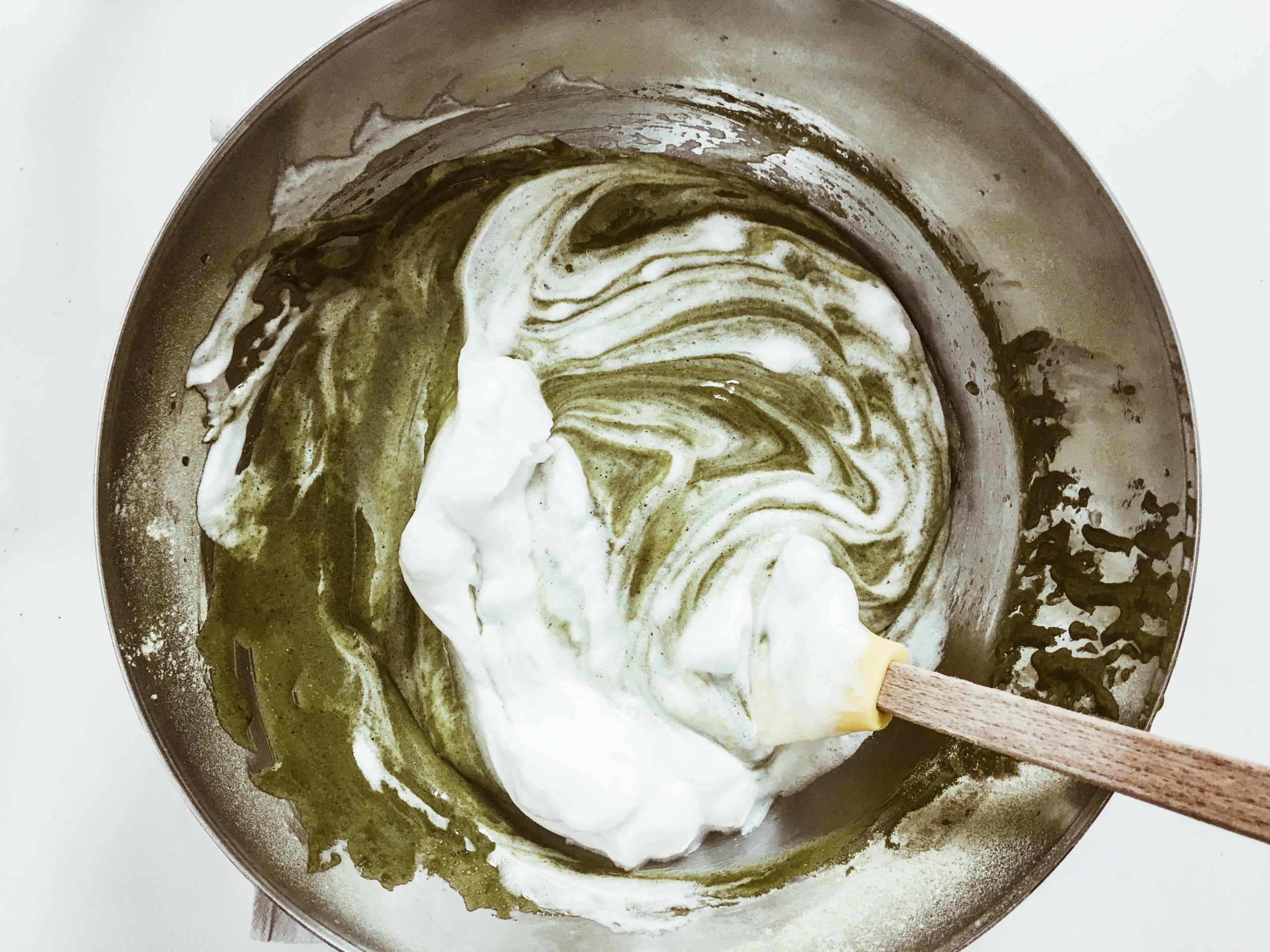

When you have the mixture well amalgamated, pour the mixture into the pan that should not be buttered or floured. Put everything in a preheated oven for about 1 hour and 15 minutes and when cooked, remove the pan and turn it immediately upside down.

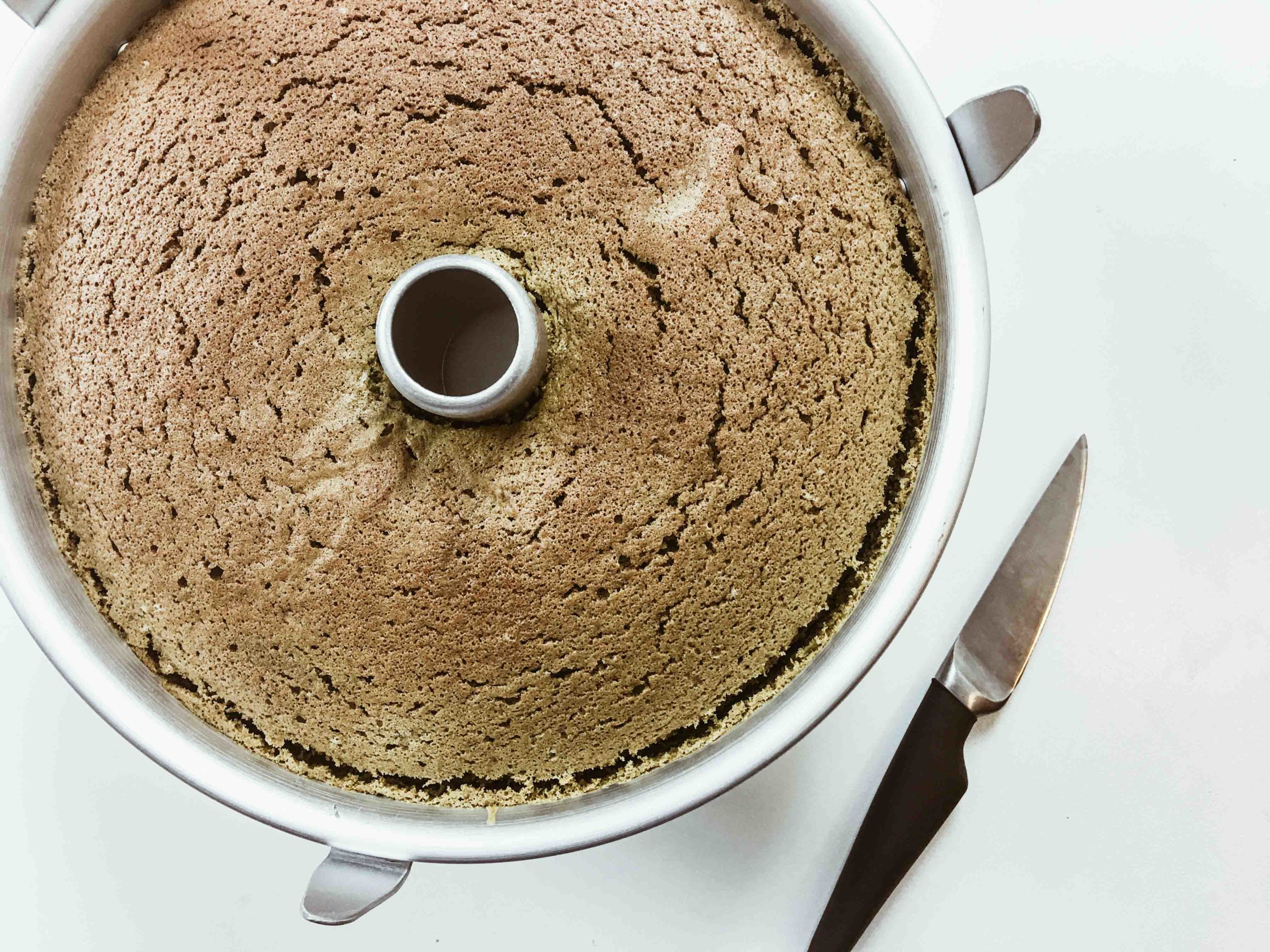

Let it cool slightly and then remove the cake from the pan. Once ready, you can cut thin slices to decorate your Zen garden.
Step 4: The Pathway
In some Zen gardens, we also find flat stones that allow us to cross the garden leaving it undisturbed. Here is how we will create them.
Mini Meringues - Ingredients
|
The trick in preparing the meringues is all in the eggs, in fact, the trick is to have fresh eggs and at room temperature. Then separate the yolks from the whites, pouring them into a large enough bowl. In this case, we won't use the yolks, but do not waste them and keep them aside, you will surely find a way to use them in the kitchen.
Make sure there are no residual yolks inside the bowl otherwise they will not mount. Then take the electric whips and operate them at medium speed. Alternatively, you can also carry out this process inside a planetary mixer, if available. While you are whipping the eggs, gradually pour the sugar into the bowl together with a few drops of lemon juice.
To create perfect meringues, the egg whites will have to be whipped very firmly and to understand if you are doing everything correctly there are two tests. The first is the visual one, in fact, the mixture must always be shiny and frothy. You can do the second test with the whips. In fact, detaching the latter you should notice a tuft of egg white with the tip. Everything must be similar to a sort of frothy and shiny cloud.


Prepare a baking tray with a baking sheet and then transfer all the mixture into a sac-à-poche with a round hole nozzle. Form small disks from 2 to 4 cm in diameter (this depends on the size of your final zen garden) well spaced apart. Then put them in the static oven preheated to 75° for about 2 hours.
Your meringues will have to dry slowly in the oven and as soon as they are completely dry, take the pan out of the oven and let it cool completely before removing it from the pan.
Step 5: Serving the Zen Garden
Now you can let your imagination run wild and build your edible zen garden according to your preferences! In case you want some ideas, below you will find some reference images. If you decide to try this recipe, send us your photos in the comments below or on our social pages, we are curious to see your creations!
[ngg src="galleries" ids="3" display="basic_thumbnail" thumbnail_crop="0"]Sources: pandispagna.net, giallozafferano.it, Pinterest, Wikipedia













